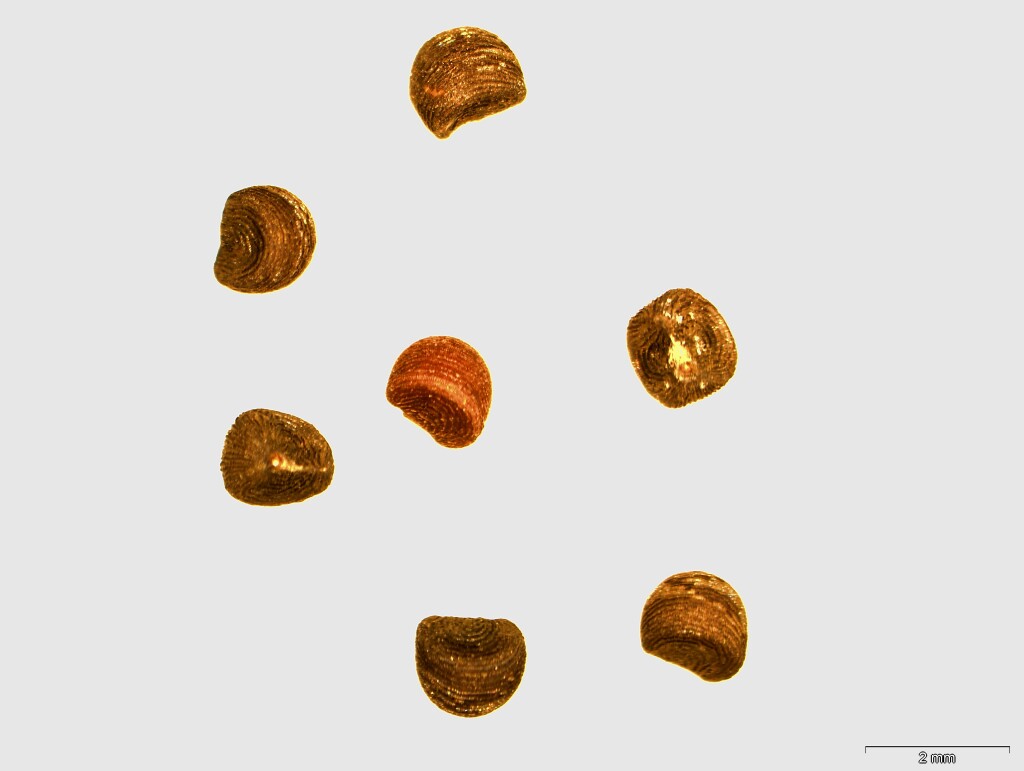Phyllanthus
Trees, shrubs or herbs, monoecious or dioecious. Leaves alternate, entire, shortly petiolate, often distichous on branchlets; stipules free or rarely fused, mostly small. Flowers axillary (in Victoria), singular or fascicled, occasionally in racemes or loose panicles; peduncles usually absent. Male flowers: sepals 6, in 2 whorls (in Victoria, except weedy P. tenellus, see below), sometimes 4, or more than 6, free; disc present, of discrete lobes; stamens 2–6 (3 in Victoria), filaments free or variously connate, anthers dehiscing via longitudinal slits (in Victoria) or rarely horizontally. Female flowers: sepals 6, in 2 whorls (in Victoria) sometimes 4, 5, or more than 6; disc present and commonly united into an annulus (in Victoria), or cupular around ovary; ovary commonly 3-locular, ovules 2 per locule, styles free or shortly connate, entire or variously bifid. Fruit a capsule (in Victoria), rarely berry-like, often deeply 3-lobed, commonly transversely ellipsoid and apically depressed (in Victoria), rarely ovoid without a depressed apex; seeds trigonous, smooth or often prominently sculptured, sometimes pitted by an extra-hilar lateral depression, usually not elongate.
About 750 species, world-wide; 51 species in Australia, 40 endemic, 3 naturalized.
Some species are toxic to stock, none of which are known from Victoria.
Phyllanthus tenellus Roxb., a native of Madagascar, has been recorded as a rare weed of urban gardens. It is an erect summer annual to c. 30 cm high with rather membranous, obovate, discolorous leaves 5–20 mm long and 2–10 mm wide. The small (c. 2 mm diam.) flowers are unisexual, usually in small axillary clusters of either or both sexes. Male flowers have 5 sepals and stamens; female flowers have 6 sepals. To date, it has been noted in Victoria only from suburban Melbourne, in Clifton Hill and Bentleigh, and is not considered naturalised in the State.
Hunter, J.T.; Bruhl, J.J. (1999). Phyllanthus. In: Walsh, N.G.; Entwisle, T.J., Flora of Victoria Vol. 4, Cornaceae to Asteraceae, pp. 74–78. Inkata Press, Melbourne.
 Spinning
Spinning


